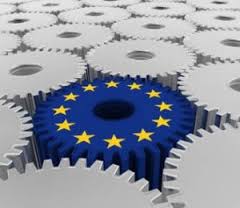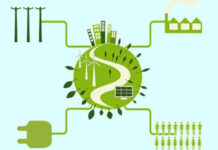
Do Renewables today represent an investment opportunity?
The market is growing and will be even more so in the future. An individual who decides to invest is facing two possible options: with a limited investment he can build a residential photovoltaic system, while investing in higher volumes and margins, he may turn to specialized funds. The funds, compared to a private placement, have the advantage of the technical and financial checks that they perform before approving any investment.
In your experience, who invests in funds like yours?
Generally individuals, mainly through other intermediary funds.
How can you protect yourselves from risky investments?
Investing today is not an easy choice, but for those who know how to look around, there are plenty of opportunities. You need to choose a market where the industry is still profitable. In order to do this, the prospective the geographical area should be evaluated, including the opportunities provided by the legal and fiscal systems and the stability of these parameters with respect to issues such as the security of the country.
For instance, in our Minerva case, as we are a small medium fund, we are interested to invest in projects with a sufficiently high expected return and in any case higher than the cost of money (for us quite high), to ensure a profit for our investors. According to these parameters, at the present time, Japan is a tough market, but with attractive returns. We are also assessing areas still not popular for this business, such as: Myanmar, Cambodia, Vietnam, Chile and South America in general. While in North America we are looking to Mexico.
In some cases there is a greater geopolitical risk, I think of Cambodia or Myanmar, but normally you choose to operate on areas most at risk when the returns are greater.
Do you believe that in Europe there is no more room to invest?
In Europe, especially in Germany and Italy, there might be still some attractive investments in the so-called Distressed Assets, i.e. the acquisition of quite recent plants, already connected to the network, which are not performing to their best and so the relative returns, mainly because they require maintenance or technical changes. The investments in these cases consist in acquiring the plant, restore its performance level and bring it to a higher level of profitability. This, of course, would be possible only if you choose a plant whose characteristics allow such a performance upgrade.
Secondly, there is a market dedicated to the Operation and Maintenance activities, consisting in the technical and administrative management of a portfolio of operating assets.
Could the portfolio of managed plants increase once the European energy market will be finally opened?
This could be an interesting scenario. The European market, from a technical point of view, is growing: I think to the SEU (in Italy) and to the development of sophisticated control systems for the management of a portfolio of energy production assets, not necessarily linked to renewable energy only.
From this one could create a new relationship between the “Prosumer” and the network, I think, for example, to a consortium of private plants as it happened in Umbria (https://www.canaleenergia.com/component/content/article/96-articoli-di-redazione/2817-economia-sociale-bilancio-positivo-per-1000-tetti-solari.html). Do you think this development could represent a new business?
Consortia of private plants can represent a future development, while we think that the construction of large photovoltaic plants will no longer occur in Italy.
In this perspective, we are looking at the industrial districts that could represent an ideal situation, albeit the regulatory aspect shall be clarified. The ideal scenario would be using the district as a microgrid, with a single connection to the network and the rest of the connections handled internally to the circuit which is thus created.
Clearly, a similar situation involves some care. One must be assured of the stability and the security of the investment: for example, acting on several actors within the consortium, one must be sure of being able to stem the possible failure of one of these.
In Umbria the installations are on private roofs…
In this case there is a difference since a private is less prone to go on bankrupt, while there are still some problems remain to be solved with the network. The limitation here is not the technology, but the required network upgrade.
Which are the rules of the funds, and how can you choose between one and the other?
All the investment funds, to be sold on the market, must meet specific rules. The differences to be taken into consideration when making a choice are: understand who are the managers and their experience in the field (such as for Minerva), transparency of the fund in communicating the data relevant to the managed assets and finally the expected investment returns (the size of the management team should be also assessed, since a lean team ensures lower costs and therefore higher returns).
Per ricevere quotidianamente i nostri aggiornamenti su energia e transizione ecologica, basta iscriversi alla nostra newsletter gratuita
e riproduzione totale o parziale in qualunque formato degli articoli presenti sul sito.

















